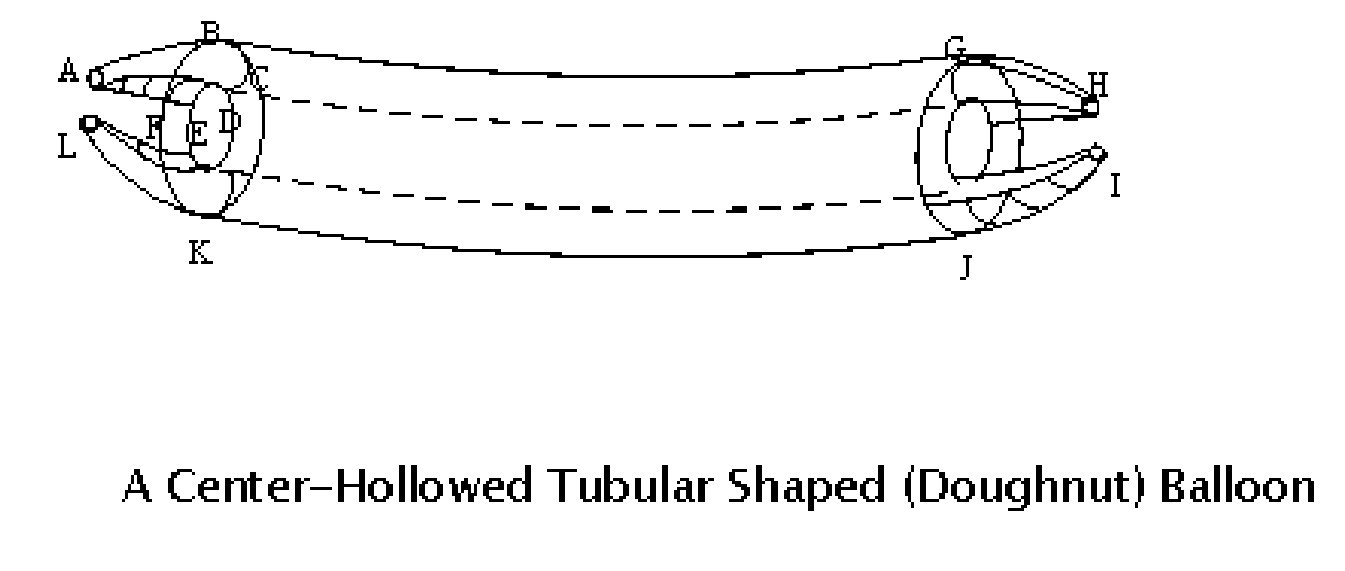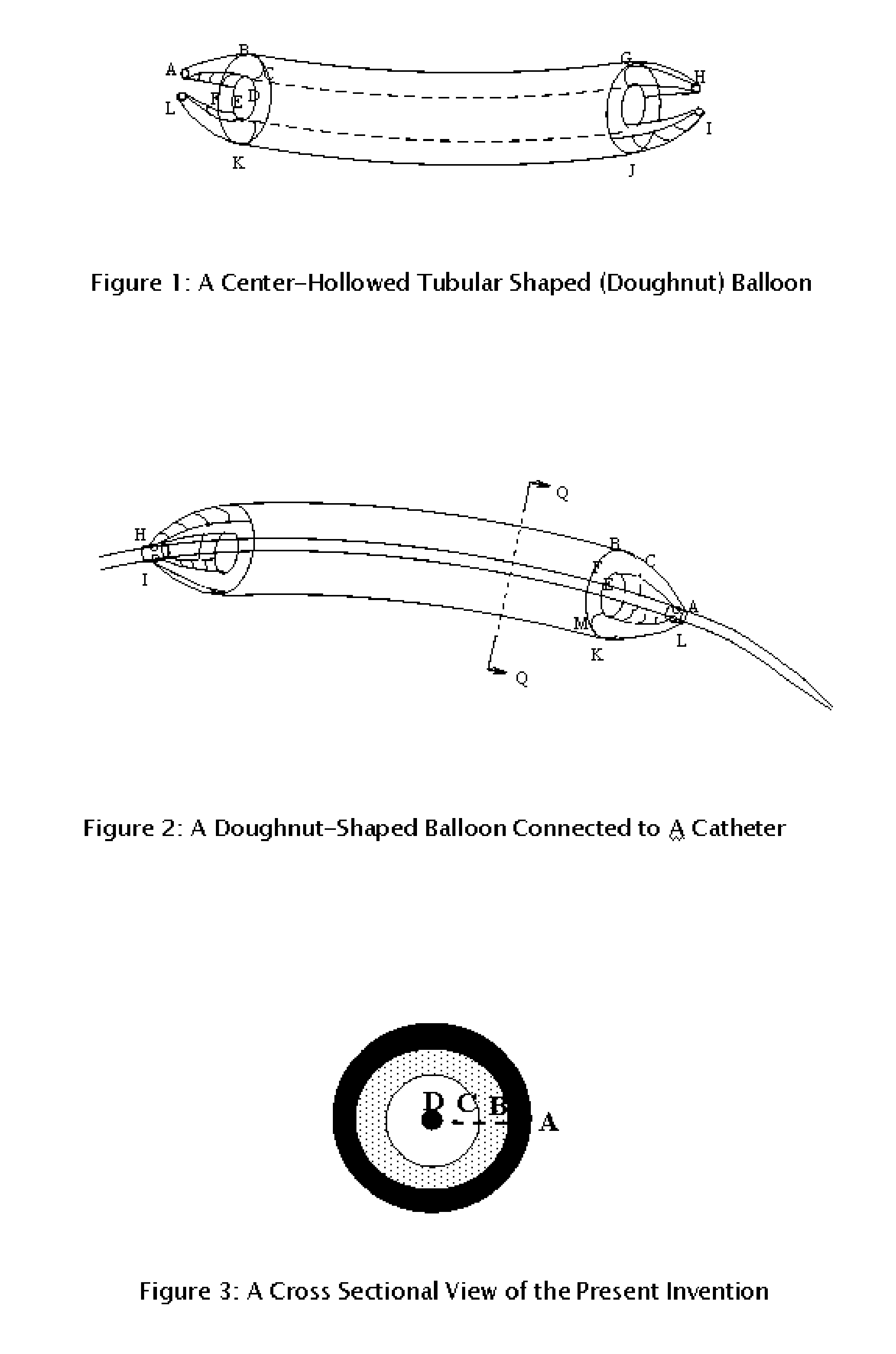Center_hollowed_tubular_shaped balloon for
a balloon and hollow tube technology, applied in the field of balloons with hollow tubes, can solve the problems of insufficient cross sectional flow area in the blood vessel, heart attack, blood flow interruption, etc., and achieve the effect of less invasiv
- Summary
- Abstract
- Description
- Claims
- Application Information
AI Technical Summary
Benefits of technology
Problems solved by technology
Method used
Image
Examples
Embodiment Construction
[0018] When the balloon is inflated, the main body of the balloon expands into center hollowed tubular shape (BGJK in FIG. 1). It looks like a doughnut with a hole in the center; its length is made to fit the length of the stent to be inflated. The two parallel dash lines represent the inner diameter of the balloon, which is also the pass way for blood to flow through. Tiny holes at A, H, I, and L are for radiopaque solution, or saline, or other media to flow into the balloon, inflating it into full size. The holes are also for retrieving radiopaque solution, or saline, or other media out of the balloon, causing it collapses. The outward pressure from the balloon re_expands the stent to force open the blockage. At each end of the balloon, there is an (or more than one) extension portion (such as ABCDEF in FIG. 1 and shape may vary) of the balloon connected to the main body of the balloon (BGJK in FIG. 1).
[0019] The extension portion is part of the thin_wall balloon with a hole at p...
PUM
 Login to View More
Login to View More Abstract
Description
Claims
Application Information
 Login to View More
Login to View More - R&D
- Intellectual Property
- Life Sciences
- Materials
- Tech Scout
- Unparalleled Data Quality
- Higher Quality Content
- 60% Fewer Hallucinations
Browse by: Latest US Patents, China's latest patents, Technical Efficacy Thesaurus, Application Domain, Technology Topic, Popular Technical Reports.
© 2025 PatSnap. All rights reserved.Legal|Privacy policy|Modern Slavery Act Transparency Statement|Sitemap|About US| Contact US: help@patsnap.com


